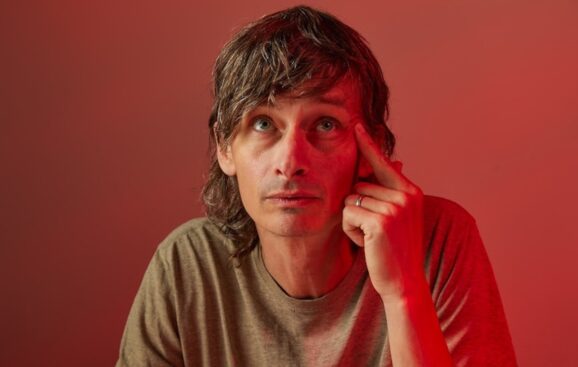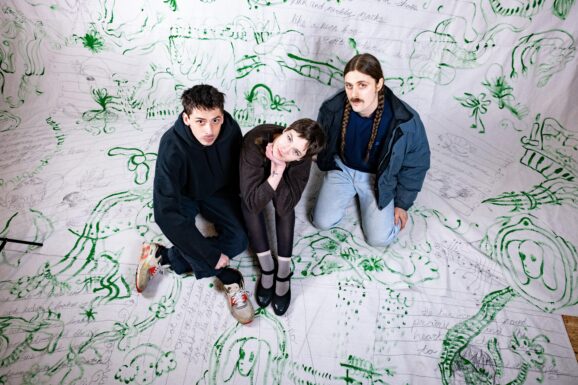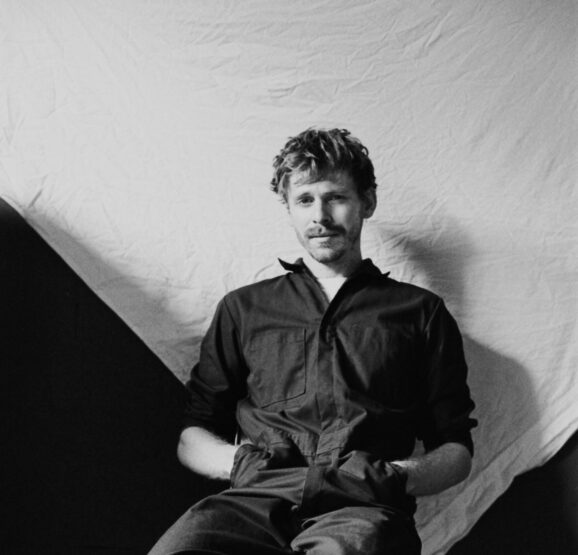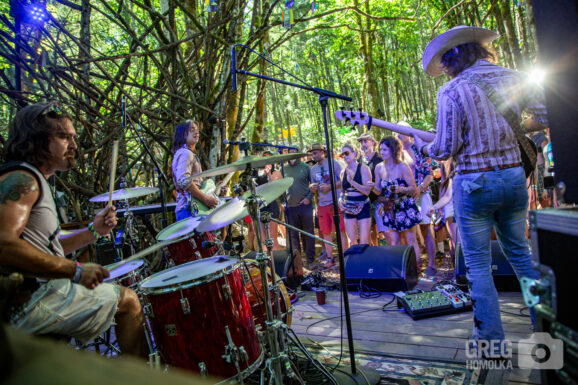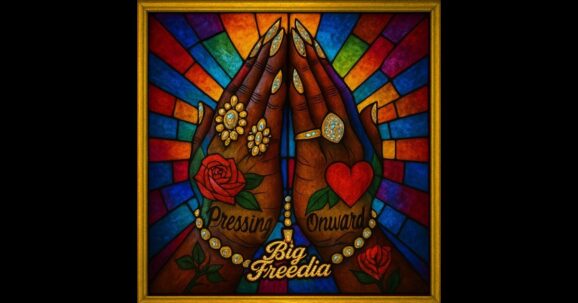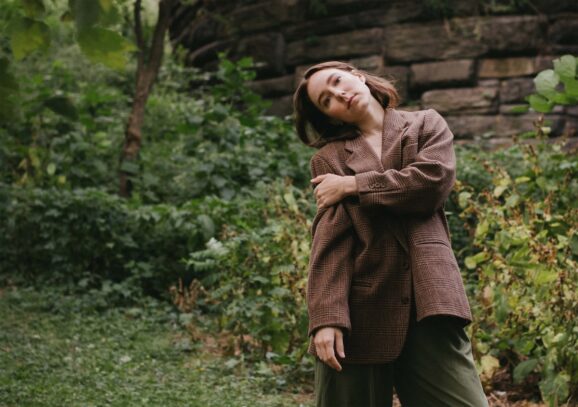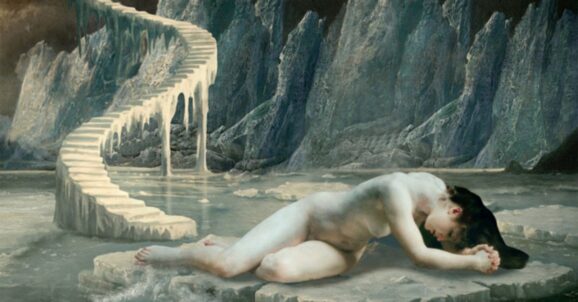British Columbia-based singer/songwriter Zada was born in Ethiopia and spent many of her formative years in the mountains of Canada where she became a proficient skier and horseback rider. She calls herself a “mountain girl” for that reason and brings a lot of her love for the natural world into her work, particularly through her music videos. Though she’s been participating in music from a young age, she started recording and releasing her own songs less than three years ago and is currently planning to release her debut album Water in the Desert on March 1st.
Several singles and videos from the album have already been released, including “Atlantic Times”, “Sweet Things in Life”, and the song “Deep End.” While the song and video for the early track “Nomad” established some of the ideas and sounds behind Zada’s multi-genre approach, these newer tracks show a diversity of approaches that suggest an exuberant exploration of an artist’s persona and sound. I spoke with Zada while she was in British Columbia about her experiences writing and recording this new music and what she feels it represents about her trajectory.
Hannah Means-Shannon: I heard that you played in New York City for Mondo this autumn. Did you play from among these latest singles?
Zada: We played one song from last year, “Nomad” and the rest was everything on the new album coming up. That was our first time playing those songs live, so it was a lot of fun. We got to do it in the USA rather than here in Canada.
That must have made it feel so real, that the album is coming up soon. That can be a moment of realization or milestone. Did it feel like suddenly revealing the songs to the world?
We were recording them in the studio during covid, so there wasn’t that much opportunity to road-test the songs. Also, I’ve been in recording studios for a while, but I only started recording my own stuff about two and a half years ago, so we were in our little bubble. This small posse of people were working on a ton of songs and then brought it down to the eight on the album.
Was it hard to choose at all? Was there voting that had to happen?
I can be pretty opinionated and I can be a little bit of a control freak, so I knew what I wanted the album to look like. But we were unanimous, for the most part, among the whole team.
Can you tell me about your live band? Were they on the album too?
I identify more as a solo artist, but I’ve become very tight with my crew, so I’ve known some of them for several years. It’s a community in Vancouver that we’ve slowly gathered and they are all lovely, amazing, and talented people. They are just really kind and that’s what it’s about.
You’re very open to genre combinations and developing new sounds. I imagine that you have to find people who are very open to that experimentation to record or perform with you.
Yes, I met a lot of the bandmates through my Producers and they knew the songs, so they thought certain people would do justice to them. When I took my drummer to New York with me, he said that because each song has a different feel, that’s fun for him, because he doesn’t have to get stuck in one particular mood. We jump around and it’s a fun treat for him.
A lot of people who have spent a great deal of time in the studio welcome variety. A musical life seems to be more complete the more ground you cover, but that’s just my opinion.
[Laughs] I like your opinion!
One thing I know for sure is that the covid period made people more experimental, with so much time on their hands and the challenge to adapt to new recording methods.
Right. I think of it kind of like famous painters: You’ve got all these eras. They’ve got their blue era, for instance. In my mind, an artist should be able to express as they need to express.
When you’re writing tracks, what sorts of methods do you use to get them down?
It’s different every time. For the song that just came out, “Deep End”, we made that one at Real World Studios in a small town near Bath in the UK. We recorded it, and did the track first, and then I was in a taxi going back to my hotel. Suddenly, an idea came, but I was in a taxi, I couldn’t pull over. I couldn’t shout, “Y’all have to be quiet! Excuse me!” I went back to my hotel, and I happened to be sharing a hotel room with my mom, so I had twenty minutes to record it before she went to sleep, since it was 11:30 at night. I was whispering it into the microphone! But it’s different every time. Then we brought that in and recorded it the next day.
But I love to play the piano, and I love to start there. I’ll send stuff to my Producers and say, “Mess around with this.” I don’t necessarily want it to sound like the piano, I want it to sound like whatever they think is fun to them, so we collaborate a lot. We’re always sharing stuff and even passing the mic around so that people can do vocal takes or hum. It becomes like a family project.
I can see how that might suggest the extra layers that could wind up being part of the song, given it a fuller sound. Some people stick very closely to a melody instead when they are developing a song and then add layers of orchestration later. Collaborating as you go might bring layers in at an earlier stage.
Yes, for sure. The three of us have our strengths and where we excel, but we also just love trying new things. It’s also a learning experience for me, and everyone. If I don’t know how to play something, I get to take a minute and see how it’s done and watch one of the Producers do something. We do have some songs where it’s very clearly what it is and I know what I want to be done, though.
These days, I think learning is the biggest constant in music. Do you have things in your life that you pursue to help balance your experience if you ever feel stressed out?
Well, I do have a really great team who support me and help my do my job and to feel grounded, but outside of music, sports and nature are part of my world. Nature is commonly something that grounds people, so I lean into that for sure.
Does that go back in time to your early years for you?
Yes. I’ve been in Whistler since as long as I can remember, once I came to Canada from Ethiopia. I would say that by around age 4, I was learning how to ski and be in the mountains. Right now, I’m already looking at my skis in the garage. I want to go now! I’ve definitely had a lot of experiences with the outdoors, as well as with horseback riding, where I used to do a bit of show-jumping and dressage.
Then, my excuse to bring it into my work, is that we’ll make these videos. Like with “The Sweet Things in Life” video, I got to ride a horse all the way through that. That was a lot of fun! People were saying, “We’re wrapped! You don’t have to ride anymore!” And I was saying, “Can I just keep riding?” I was having such a good time.
I can imagine taking off for the mountains in the distance in that video. There are amazing landscapes in that video. Is that somewhere near you?
Yes, and the beauty of British Columbia is that if I want to have a bit of Canada’s desert, which is what we call it, I just have to drive three hours away. That was in Ashcroft. There’s a huge palette here to decide between, whether you want to be in the snow, or whatever.
Does coastal life influence you, too?
We’re only an hour and a half or so from water near Vancouver, but we’ve also done some filming in Vancouver Island. That’s like Canada’s rainforest, and it’s gorgeous. That’s surrounded by water. The island is a quaint experience, and you’re probably going to be wet most of the time, but if you love fishing and surfing, it’s perfect.
I saw that you travel a fair amount, and you mentioned being in the UK, too. How does travel fit into your view of life? Is it important to you to see the world, or is it more that you need to go places to work with certain people?
The song “Nomad” started things off and the idea of being a nomad, traveling around, and taking life as it comes to you, is something that we try to implement in our every day, for sure. That relates to seeing more of the world. For the first project, I looked inward a lot. With this project, I’m trying to balance the in and the out, the internal and external. I would say travel is a huge part of what we do.
I noticed a quote that the figure we encounter in the song and video for “Nomad” has a relationship to this new collection, like this is a development for that character.
I think, as a prompt, that’s true. This is what was going through my head: I don’t want to make a whole part two to “Nomad”, but what would a nomad do in this context? When a nomad comes to another country, they learn about it. You also have this constant pull to represent your own history. I think I always try to keep those things in mind. That gets me writing. At the beginning of the project, I was thinking about that, but as we went along, the project found more of its own inspiration.
I noticed something interesting in the “Nomad” video, that you wore different costumes in these different scenes cut together. It made me think of the different aspects of one’s own personality, too. Is someone all of these things? Then, when I looked at these different new songs you’ve been releasing, each with their own sound-worlds, I wondered if they were each a kind of avenue coming from that question.
Exactly! I think you could be all of these things at once, for sure. In the opening shots of the “Nomad” video, you see all these different personas, these different characters, these different things that get tied back together. You can be all of this as long as you stay true to yourself. That’s what works.
But being on set has been a whole other art form that I had no idea about. When I thought of being an artist, I had no idea about that side of things. But once I got into it, I fell in love with planning the videos, and writing the stories with the directors, making the scripts. At the end of the “Nomad” video, we get to that scene at the end where I’m sitting on top of the pile of suitcases. I actually got to draw that out. I thought we ought to make a throne of suitcases to represent that a person has been to all of these places and they are not ashamed of their history. I didn’t think it was going to happen! But then they said, “We’ve got all these suitcases and we’re ready to go!” I said, “What??”
I loved the suitcases. It was almost a modern sculpture made of suitcases.
We should have it somewhere that everyone can sit on it. For the new visuals, we’ve been working with Blake Jorgenson and Leo Horn, and they are so collaborative. They are like a visual family.
A lot of musical artists become visual artists along the way, and it’s great when it’s rewarding for them. It can open up a new area of the arts for them.
Yes, and I never get tired of what I do because one day I’ll be making a song, and the next day, I’ll be logistically figuring out how to make a video work. There’s a beautiful ebb and flow to it that I’m really happy with.
Does it make you see a song differently to start pairing them with images?
Yes, because at first I had no idea. But once we started making more songs in the studio, after making the first few videos, I could picture scenes vividly. I feel like it almost made me more confident as a songwriter. You really have to paint the picture, and then take it back to the director. We can take that energy and represent it visually. That gives me more confidence.

